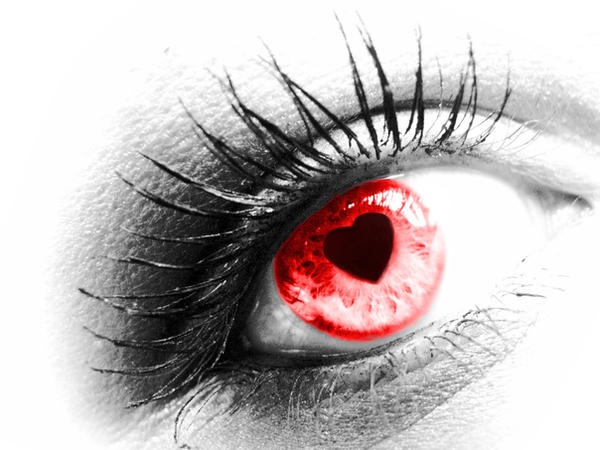

It’s a fact of life that vision can change over time, resulting in a number of noticeable differences in how well aging adults see the world around them. In fact, according to the American Optometric Association’s (AOA) 2014 American Eye-Q® consumer survey, 78 percent of adults age 55 or older report experiencing some vision loss.
“The number of blind and visually impaired people is expected to double over the next 16 years,” said Dr. Inouchi, O.D.. “This staggering statistic has implications for millions of aging Americans, but these changes don’t have to compromise a person’s lifestyle. Maintaining good health and seeing an eye doctor on a regular basis are important steps to help preserve vision.”
Common age-related vision problems include difficulty seeing things up close or far away, problems seeing in low light or at night, and sensitivity to light and glare. Some symptoms that may seem like minor vision problems may actually be signs of serious eye diseases that could lead to permanent vision loss, including:
Dry eye is another common and often chronic condition that Americans can experience later in life. Dry eye occurs when there are insufficient tears to nourish the eye. Tears are important for maintaining the health of the front surface of the eye and for clear, quality vision. Studies show that women are more likely to develop dry eye, especially during menopause.
Aging Americans will represent 19 percent of the population by 2030, up from 12 percent in 2000. Coping with age-related eye diseases and disorders and the resulting changes in health and lifestyles is top-of-mind for this growing group of consumers. The AOA’s American Eye-Q® survey revealed that 40 percent of consumers age 55 or older are worried about losing their ability to live independently as a result of developing a serious vision problem. Many eye diseases have no early symptoms and may develop painlessly; therefore, adults may not notice changes in vision until the condition is quite advanced. Healthy lifestyle choices can help ward off eye diseases and maintain existing eyesight.
“Eating a low-fat diet rich in green, leafy vegetables and fish, not smoking, monitoring blood pressure levels, exercising regularly and wearing proper sunglasses to protect eyes from UV rays can all play a role in preserving eyesight and eye health, said Dr. Inouchi. “Early diagnosis and treatment of serious eye diseases and disorders is critical and can often prevent a total loss of vision, improve adults’ independence and quality of life.”
For those suffering from age-related eye conditions, Dr. Inouchi recommends following a few simple tips:
Maintaining yearly eye exams, or more frequently if recommended by an eye doctor, provides the best protection for preventing the onset of eye diseases and allows adults to continue leading active and productive lifestyles as they age.
Great music and funky shades always go together. Put your shades on, and get up on your feet.
As technology use continues to rise both at home and in classrooms, parents severely underestimate the time their children spend on digital devices. A survey by the American Optometric Association (AOA) found that 83 percent of children between the ages of 10 and 17 say they use an electronic device for at least three hours each day. However, a separate AOA survey revealed that only 40 percent of parents believe their children use an electronic device for that same amount of time. This disparity is concerning to eye doctors and may indicate that parents are more likely to overlook warning signs associated with vision problems due to technology use.
Digital eye strain, a temporary condition caused by prolonged technology use, can cause children to experience burning, itchy or tired eyes, headaches, fatigue, loss of focus and blurred vision.
To protect vision from digital eye strain, children should make sure they practice the 20-20-20 rule: take a 20-second break, every 20 minutes and view something 20 feet away. Additionally, the following recommendations can help prevent or reduce digital eye strain:
Optometrists are also concerned about high-energy, short-wavelength blue and violet light emitted from everyday electronic devices and how those rays might affect and even age the eyes. Early research shows that overexposure to blue light could contribute to eye strain and discomfort and may lead to serious conditions such as age-related macular degeneration (AMD).
The AOA recommends that every child have an eye exam by an optometrist soon after 6 months of age and before age 3. The Pediatric Essential Health Benefit in the Affordable Care Act now provides children through age 18 with yearly comprehensive eye exams.
Our office will be closed on February 16, 2015 for the Presidents Day holiday and will reopen on Tuesday February 17, 2015.
Look deeply into your sweethearts eyes … Source: http://fc09.deviantart.net/fs41/i/2009/029/3/4/Valentine__s_eye_by_V_a_N_i_e.jpg
Source: http://fc09.deviantart.net/fs41/i/2009/029/3/4/Valentine__s_eye_by_V_a_N_i_e.jpg
HMSA posted this letter on their website acknowledging that some HMSA members personal information may have been compromised in the Anthem Inc. security breach.
Dear HMSA Member,
I’m sure you’re aware of the national news story that was reported on February 5 about the cyber attack against Anthem Inc., a Blue Cross and Blue Shield plan that serves residents in 14 states. Attackers accessed names, birthdays, medical IDs, Social Security numbers, street and email addresses, and employment information from millions of current and former Anthem members. No credit card or medical information has been reported stolen at this point in the investigation.
There’s a possibility that some HMSA members may be affected. We’re working with Anthem and the Blue Cross and Blue Shield Association to identify these members. You could be affected if you’ve received medical or hospital services in California, Colorado, Connecticut, Georgia, Indiana, Kentucky, Maine, Missouri, Nevada, New Hampshire, New York, Ohio, Virginia, or Wisconsin.
It’s possible that not every member who’s received services in these states will be affected. Anthem will notify you directly by letter if your data has been accessed. In addition, you can go to AnthemFacts.com for the latest information or call the company’s toll-free number at 1 (877) 263-7995.
It’s very important to be careful about how you share your personal information. Internet scams have already emerged in the wake of the Anthem cyber-attack. Never give your personal information to anyone you don’t trust, particularly if they call or email you.
We know this is causing a great deal of anxiety and are monitoring the situation closely. We’ll share updated information as we receive it, so check this webpage regularly.
If you have questions, don’t hesitate to call us at (808) 948-6079 on Oahu or 1 (800) 776-4672 toll-free on the Neighbor Islands or the Mainland. TTY users can call 711.Sincerely,Michael A. Gold
President and Chief Executive Officer
Découvrez notre collection Printemps / été 2015.
Discover our Spring / summer 2015 collection.
Here is a sneak peek at Lafont’s new 2015 spring and summer collection of eyeglasses.
Here are 5 tips for a life time of healthy vision. Honolulu eye doctors, Daniel Yamamoto, O.D. and Tracie Inouchi, O.D. suggest:


Our office will be closed on January 19, 2015 for the Martin Luther King Holiday.
Many consumers know they should eat five servings of fruits and vegetables each day but what they may not know is what you eat can affect your eye health and vision as you age. Six nutrients ― antioxidants lutein and zeaxanthin, essential fatty acids, vitamins C and E and the mineral zinc ― have been identified as helping to protect eye sight and promote visual health.
Since the body doesn’t make these nutrients naturally, it’s important that they are incorporated into your daily diet and, in some cases, supplemented with vitamins. Yet, according to the American Optometric Association’s (AOA) 2014 American Eye-Q® survey, 73 percent of Americans do not incorporate any specific foods or supplements into their diet to help improve eye health or vision.
Also, contrary to popular belief, carrots are not at the top of the list for foods that are among the best for the eyes. To increase your intake of essential eye-healthy nutrients, the AOA recommends adding the following to your diet:
Foods rich in lutein and zeathanthin including green, leafy veggies, such as spinach, broccoli and kale and bright yellow/red foods like tomatoes, peppers, egg yolks and mangos;
To learn more about these important nutrients, visit www.aoa.org/patients-and-public/caring-for-your-vision/diet-and-nutrition.
The ninth annual American Eye-Q® survey was created and commissioned in conjunction with Penn, Schoen & Berland Associates (PSB). From March 20-25, 2014, PSB conducted 1,000 online interviews among Americans 18 years and older who embodied a nationally representative sample of the U.S. general population. (Margin of error is plus or minus 3.10 percentage points at a 95% confidence level)
Anti-reflective eyeglass lenses have a glare coating that is applied directly over the lens. It may be applied to any prescription lens and offers several benefits. Among them, they allow you to see better and to look better.
Distracting reflections and glare can rob your eyes of up to 14% of available light. Anti-Reflective lenses allow virtually all the available lightto pass through your lenses for sharper, clearer, more comfortable vision. By reducing oncoming glare, anti-reflective lenses allow you to see more clearly at night, especially when driving. Recent tests prove that patients are able to see more clearly with Anti-Reflective lenses,especially at night.
Spending long hours at a computer screen, whether at work or play, can dramatically contribute to eye fatigue. In the office where fluorescent light and computer monitors are especially troublesome, the lenses also help to eliminate annoying reflections thereby reducing eye strain and providing sharper, clearer, and more comfortable vision.
Now you can eliminate annoying reflections on the surface of your lenses. Anti-Reflective lenses allow you to see better and look better,while enhancing your ability to communicate with others. The new generation of Anti-Reflection lenses are easier to clean than ever before.
Learn more here AR_seelookbetter (pdf).

New Year’s is an exciting time of year. It is a time for change and for an optimistic outlook on the rest of the year. It is also the time of year that people traditionally make New Year’s resolutions to start the year off well.
Here are some tips that you can start doing right now to help keep those eyes healthy :